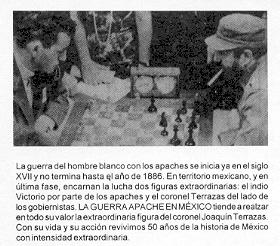
Edward Winter
C.N. 1180 gave a game lost by Filiberto Terrazas against Fidel Castro in Havana, 1966, from page 323 of the November 1966 Jaque Mate: 1 e4 e5 2 f4 exf4 3 Nf3 Bd6 4 d4 h6 5 e5 Bb4+ 6 c3 Ba5 7 Bxf4 g5 8 Bg3 Qe7 9 Be2 d6 10 exd6 cxd6 11 Qa4+ Nc6 12 d5 Bd8 13 dxc6 b5 14 Qxb5 a6 15 Qa4 g4 16 c7+ Bd7 17 c8(Q) Rxc8 18 Qd4 gxf3 19 Qxh8 Qxe2 mate.

The above photograph, taken during play, was on the back-cover of Terrazas’ book La guerra apache en México, which was first published in 1972.
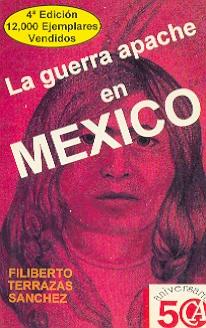
As mentioned on pages 8-9, in 1962 Terrazas wrote El águila caída, a biographical novel concerning Carlos Torre.
(4049)
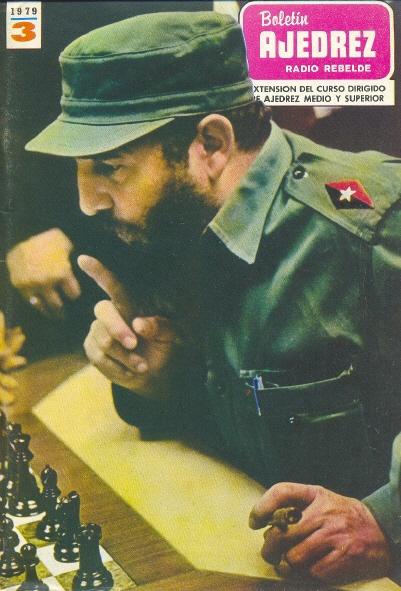
Michael Goeller (East Brunswick, NJ, USA) draws our attention to an article of his dated 2 August 2006 on Fidel Castro and chess. Readers may be able to help him resolve some of the matters discussed, which include Terrazas v Castro (see C.N. 4049).
Below, we give six other photographs of Castro, from the book Cuba/66 XVII olimpíada mundial de ajedrez (Havana, undated):
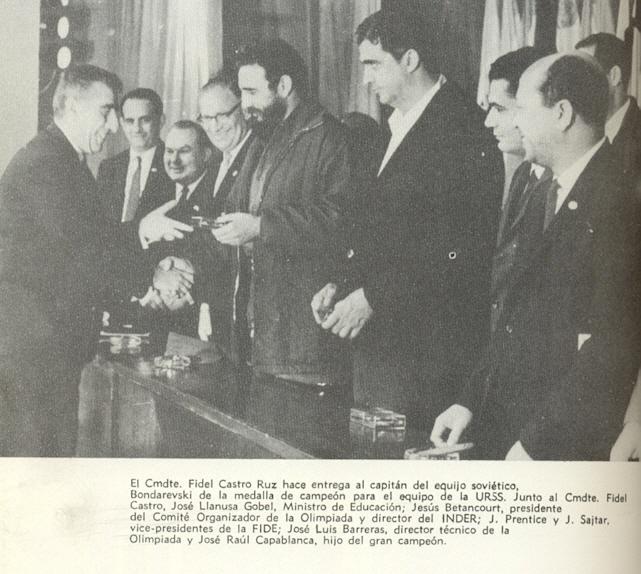
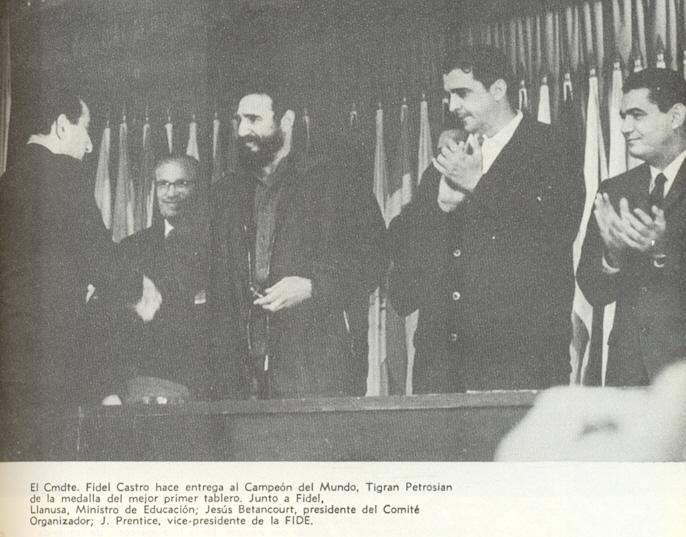
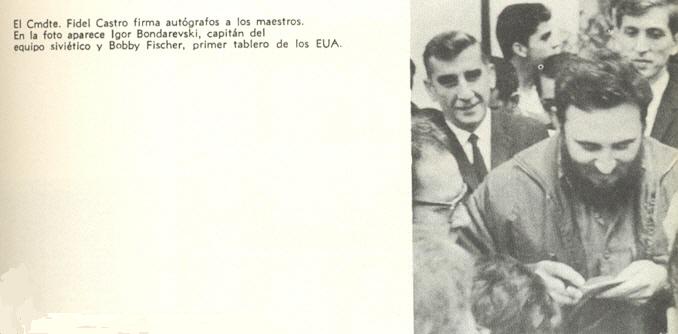
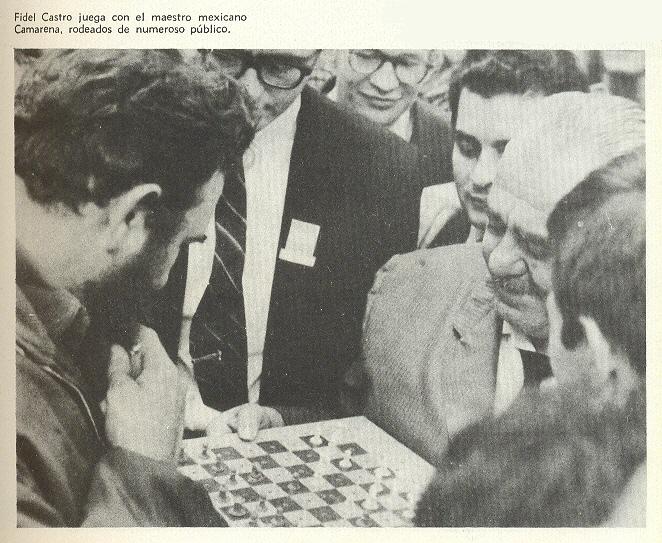
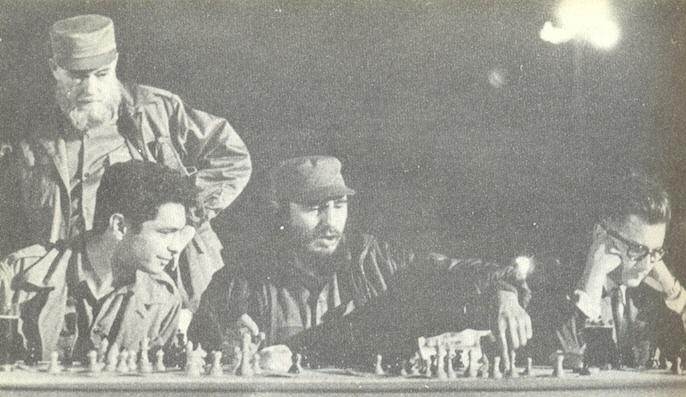

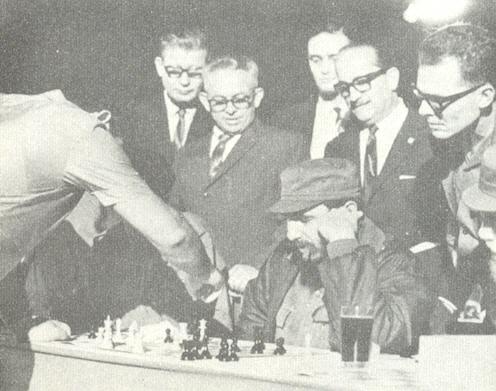
(4502)
The front covers of both volumes of Ajedrez integral (Havana, 2003 and 2005) mentioned in C.N.s 8707 and 8708 have a quotation ascribed to Fidel Castro (‘Masificar el ajedrez colocaría a este país con mucha más capacidad de pensar, más eficiente; es como saber una asignatura básica’). Page 13 of volume one also offers: ‘el ajedrez te coloca a cada instante ante la necesidad de resolver el problema.’
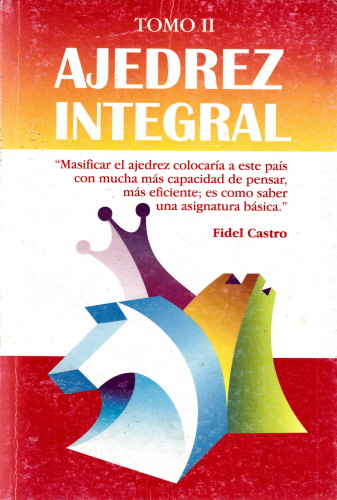
It will be appreciated if readers can help us build up an authoritative list of remarks about chess by Castro, i.e. in the fully-sourced, bilingual format adopted in The Most Famous Chess Quotations.
There are a few photographs of Bobby Fischer with Fidel Castro (Havana, 1966), but the shot below (of which a better copy is sought) is slightly different from a well-known one:
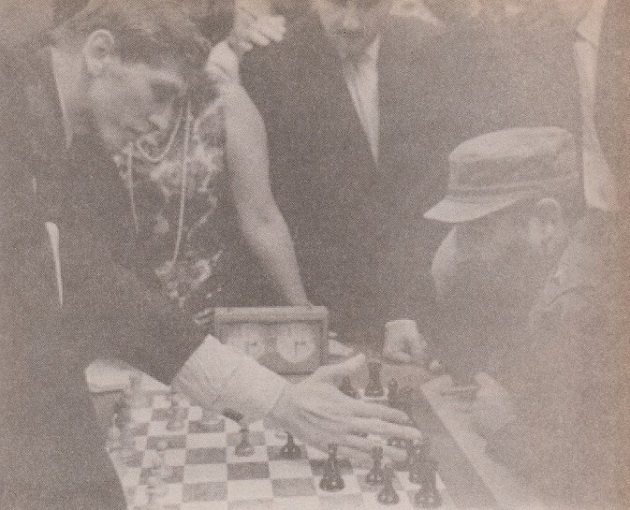
Source: El ajedrez en Cuba by José Luis Barreras Meriño (Havana, 2002), in the concluding photographic supplement.
(9033)
See too page 15 of the January 1967 Chess Review.
As previously noted, C.N.s 1180 and 4049 gave this game won by the Cuban leader in Havana in 1966:
1 e4 e5 2 f4 exf4 3 Nf3 Bd6 4 d4 h6 5 e5 Bb4+ 6 c3 Ba5 7 Bxf4 g5 8 Bg3 Qe7 9 Be2 d6 10 exd6 cxd6 11 Qa4+ Nc6 12 d5 Bd8 13 dxc6 b5 14 Qxb5 a6 15 Qa4 g4 16 c7+ Bd7
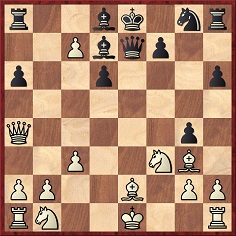
17 c8(Q) Rxc8 18 Qd4 gxf3 19 Qxh8 Qxe2 mate.
Luke McCullough (Mitchell, SD, USA) asks whether White’s 17th move was really c8(Q), and not cxd8(Q)+.
Firstly, we confirm that the improbable-looking 17 c8(Q) was given, although with a check sign, in our source, which was the November 1966 issue of the Cuban magazine Jaque Mate. Below is the full feature, which was by Terrazas himself:
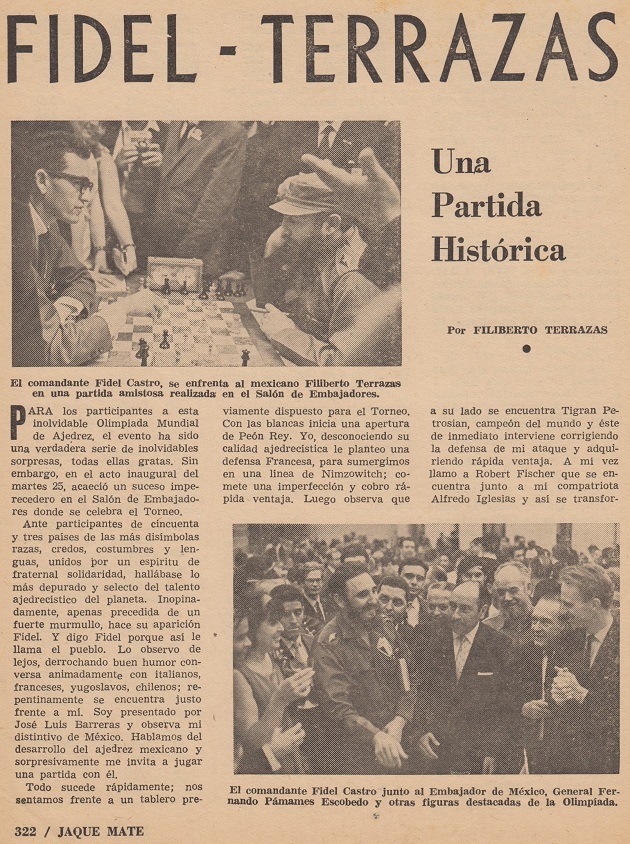
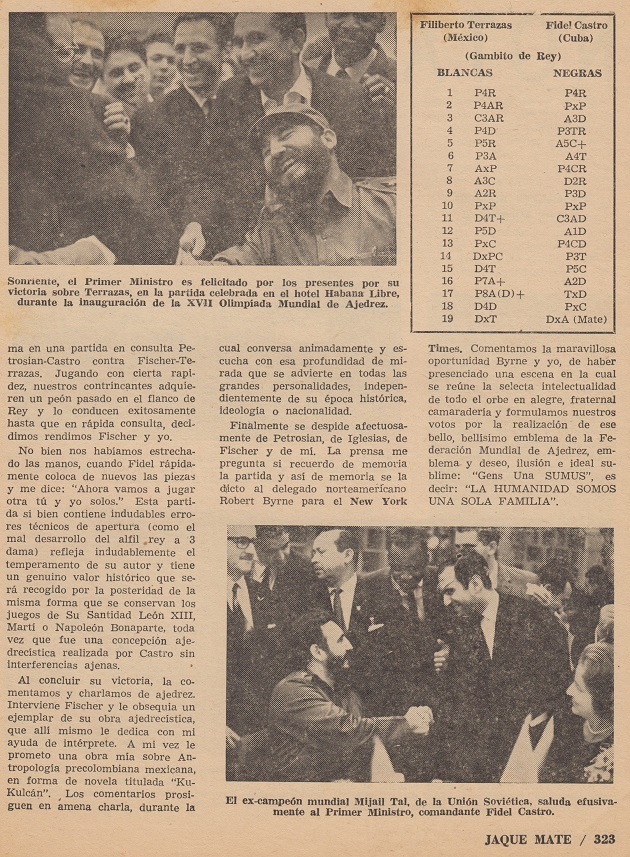
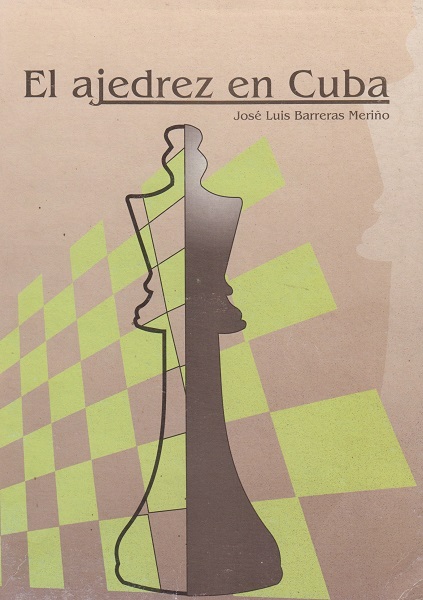
When the text by Terrazas was reproduced on pages 164-165 of El ajedrez en Cuba by José Luis Barreras Meriño (Havana, 2002), the moves were given as 17 cxd8(Q)+ Rxd8. That version is in a number of databases.
El ajedrez en Cuba (pages 165-166) had a second game played by Fidel Castro, as Black against Joaquín Camarera/Camarena:
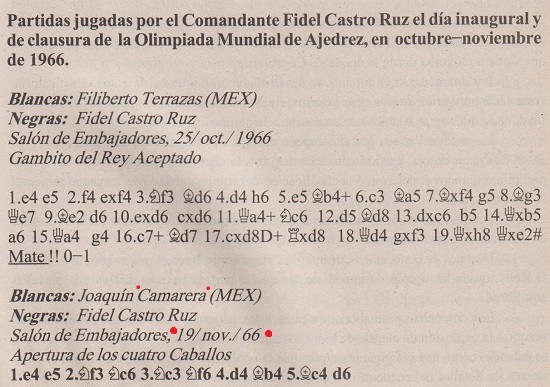
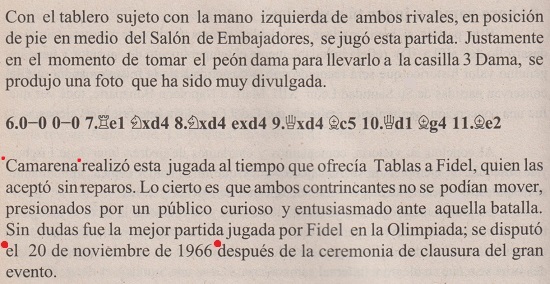
1 e4 e5 2 Nf3 Nc6 3 Nc3 Nf6 4 d4 Bb4 5 Bc4 d6 6 O-O O-O 7 Re1 Nxd4 8 Nxd4 exd4 9 Qxd4 Bc5 10 Qd1 Bg4 11 Be2 Drawn.
The first photograph in the Jaque Mate article is relevant to the discussion about Terrazas in Mysteries at Sabadell, 1945.
From the Keystone Pictures archives Olimpiu G. Urcan (Singapore) has obtained permission for us to reproduce two photographs of Fidel Castro:
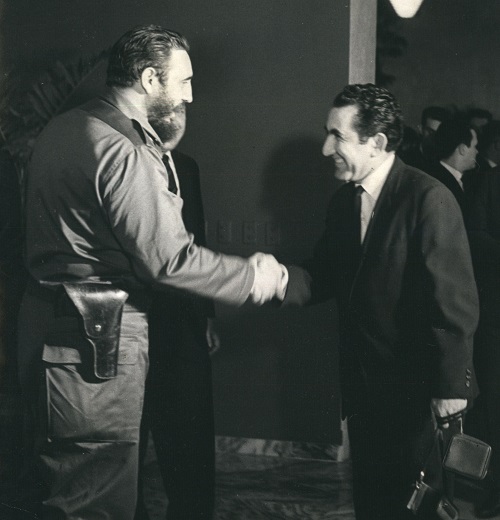
With Tigran Petrosian
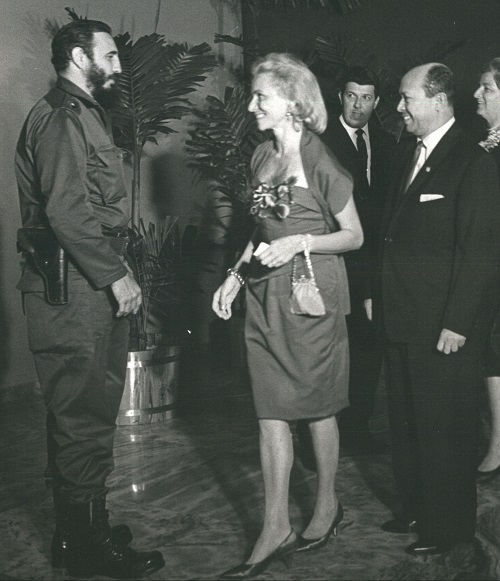
With Ella Johansson (the wife of Folke Rogard) and José Luis Barreras
(11379)
A photograph of Fidel Castro with Florencio Campomanes (Havana, 1966) is on page 8 of Gens una sumus, a magazine published after the 1986 Olympiad in Dubai.
See too the contribution from Christian Sánchez (Rosario, Argentina) in C.N. 11786.
To the Chess Notes main page.
To the Archives for other feature articles.
Copyright: Edward Winter. All rights reserved.